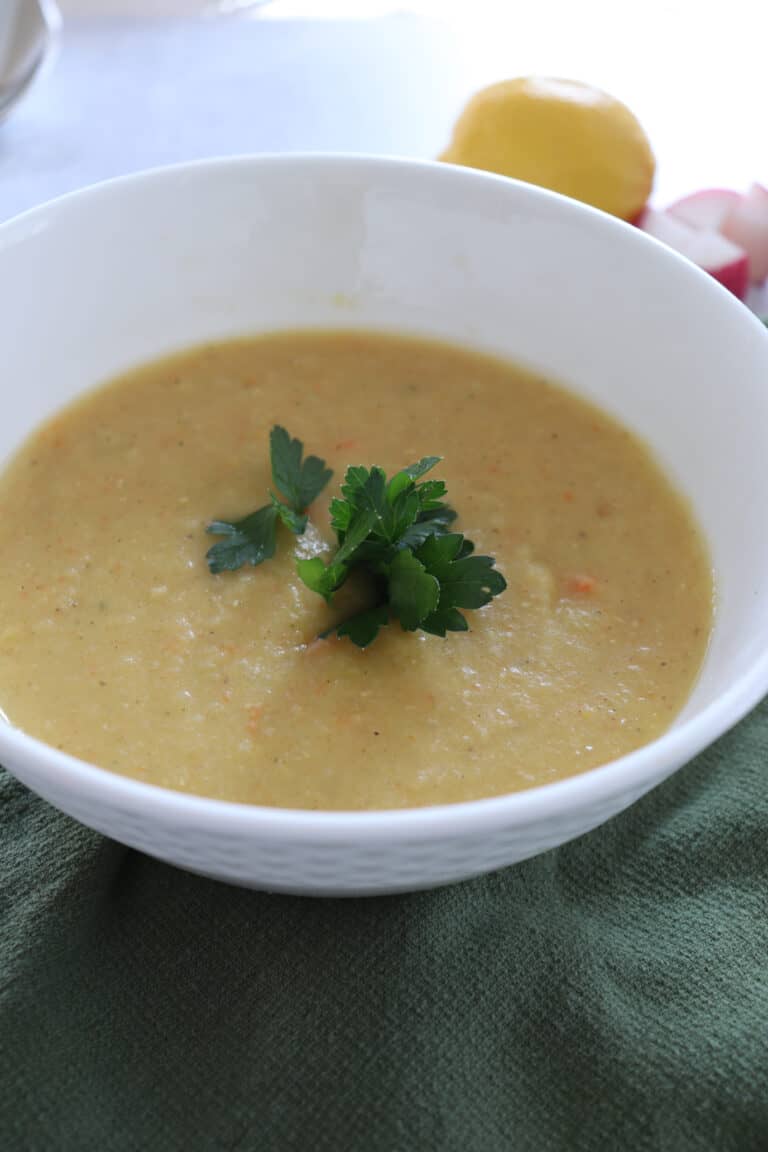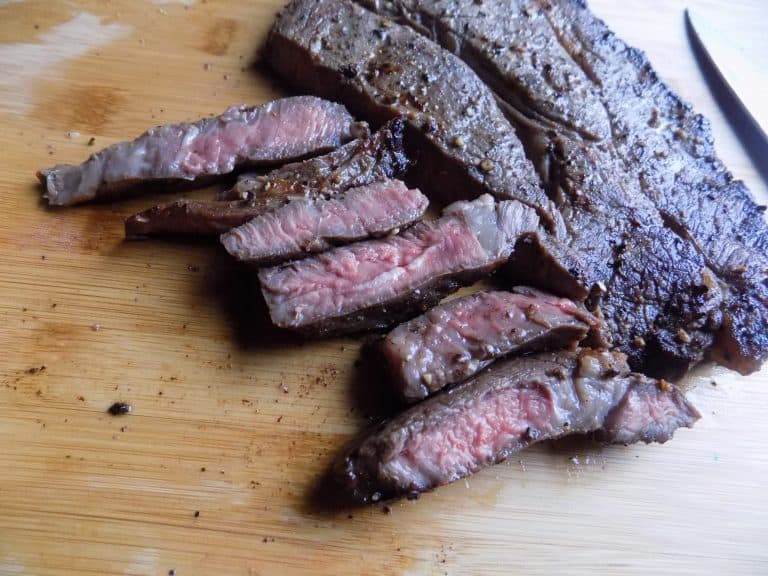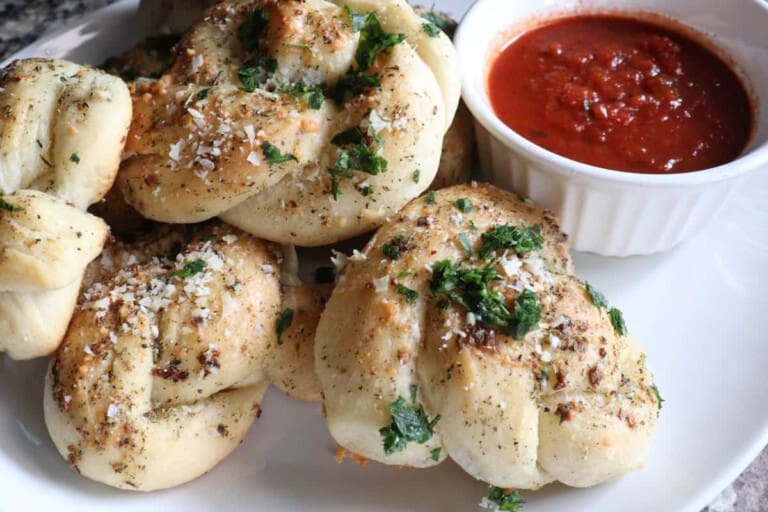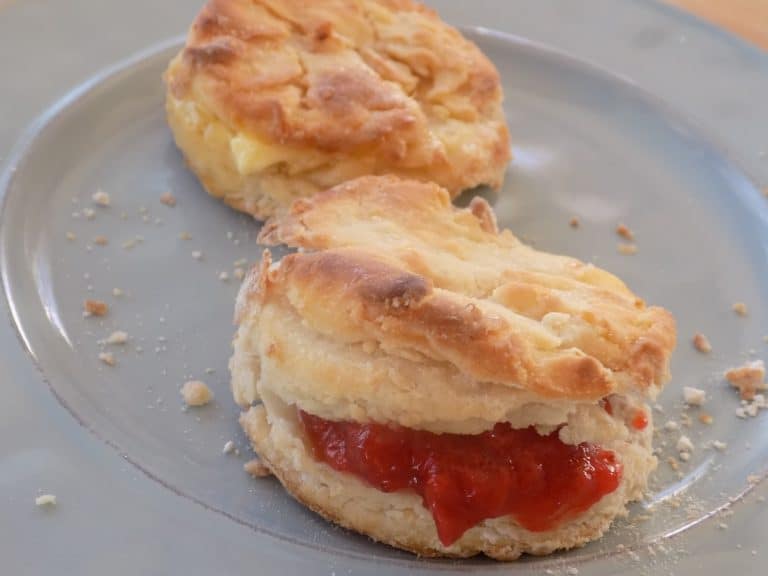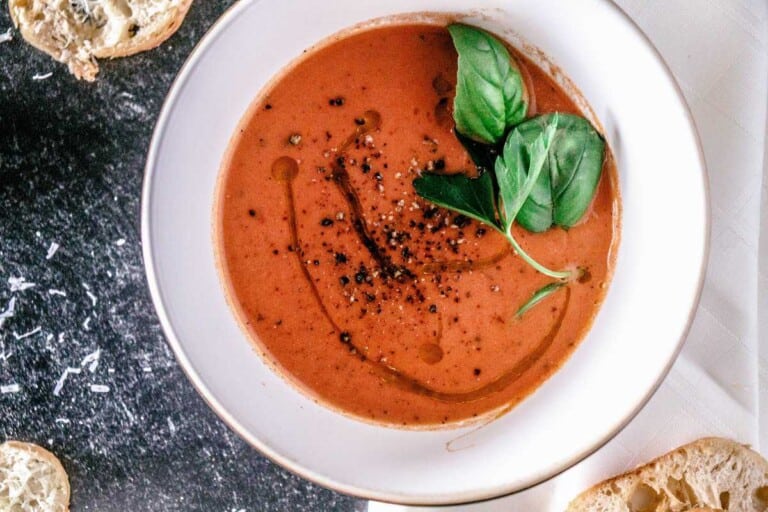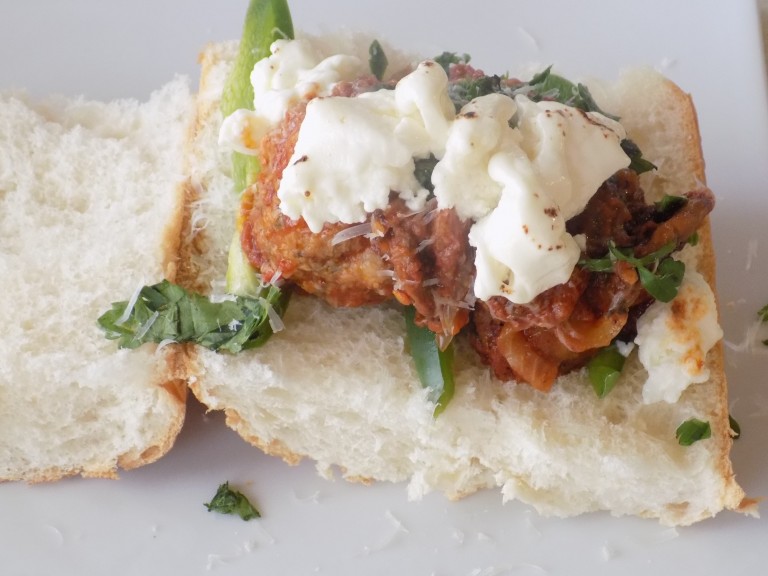Lebanese Sauteed Kafta
Kafta is a Lebanese staple for a reason. Beyond being extremely delicious, it's also extremely easy to make and extremely versatile. It comes together quickly and only requires a few ingredients. Oh yeah and the bonus...it's very healthy! Earlier in my blogging days, I shared our kafta recipe, but it was for kafta in pita. This is yet another way you can make kafta. It's sauteed or pan-fried in olive oil until seared and cooked through. We then turn the heat off and add lemon juice so an olive oil-lemon sauce forms. It's beyond delicious and the kafta ends up being tangy, juicy, and tender. Just one of the many ways you can make and serve kafta.
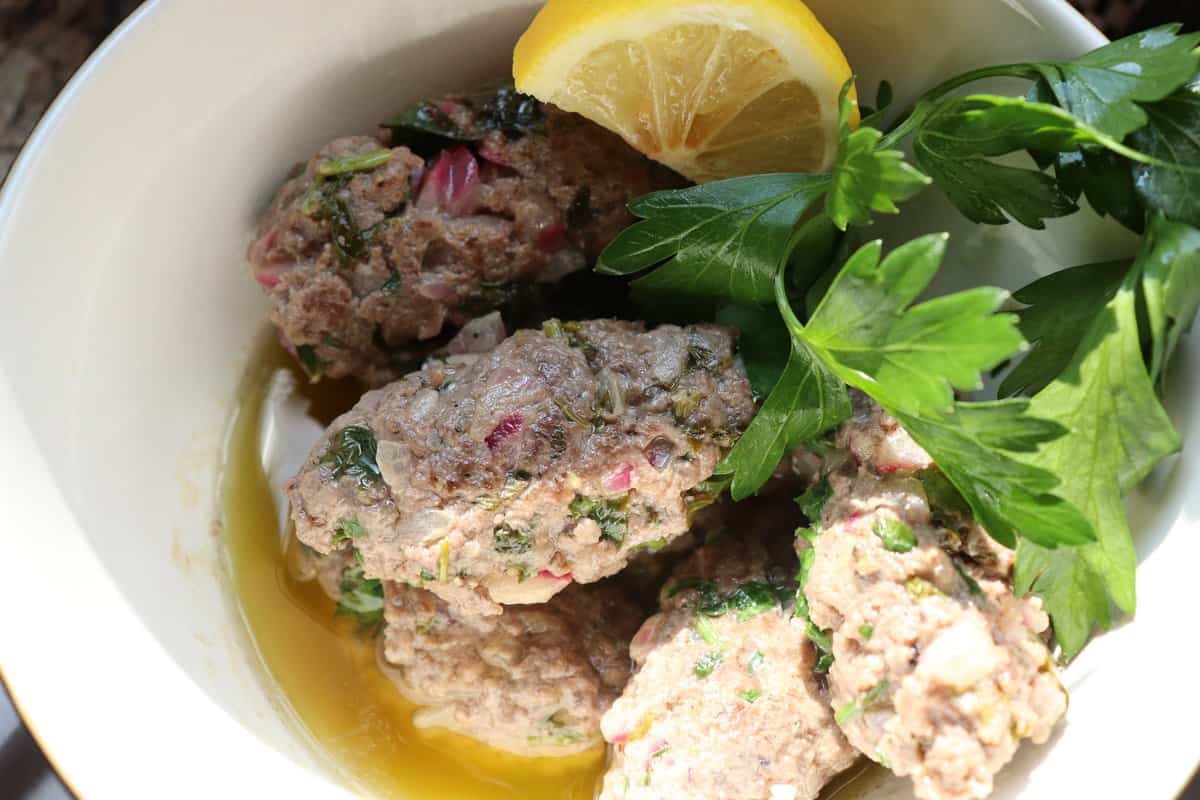
How to Make My Lebanese Sauteed Kafta:
- Begin by peeling and cutting the red onions into quarters. Once cut, remove the inner bulbs and discard them.
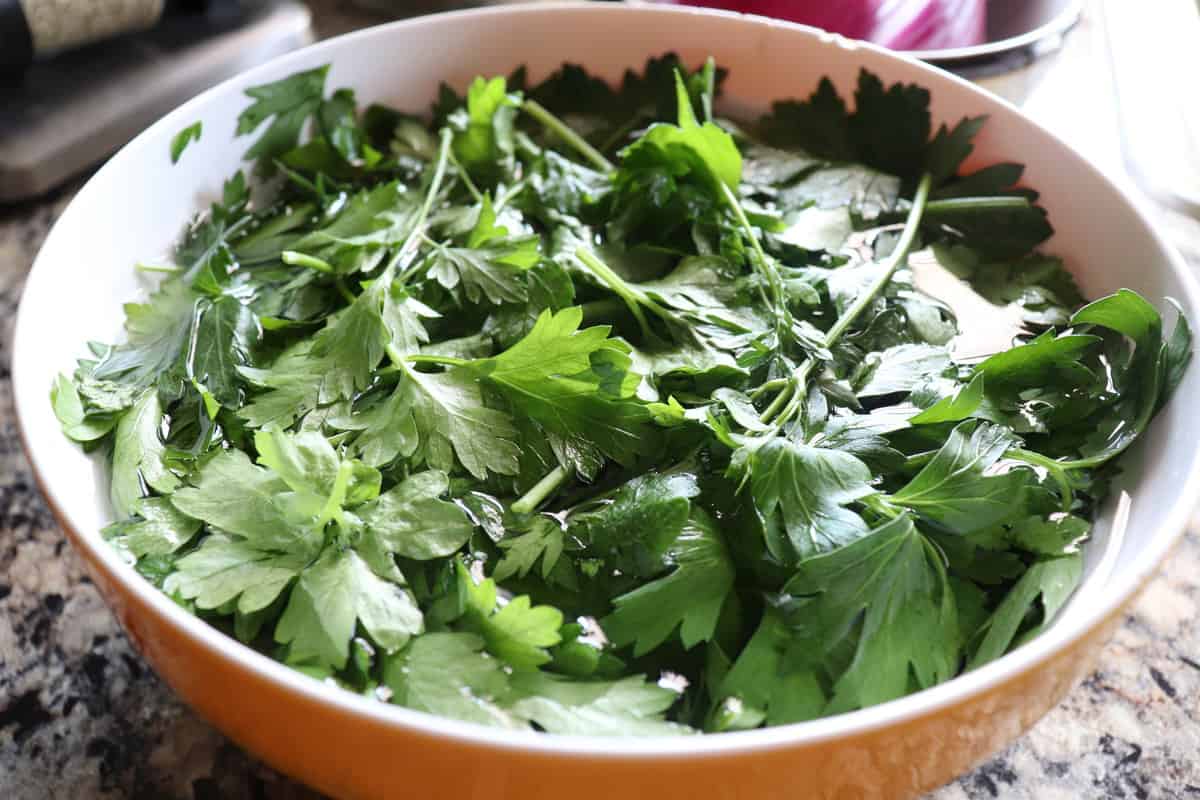
- Use a food processor or knife to dice the red onions into a fine chop or mince. Place the chopped onions in a separate bowl and set aside. Begin to mince the parsley. Once done, add all the parsley to the bowl of onions.
- Next, wash the parsley very well and allow the parsley to sit in a strainer to drain any excess moisture.
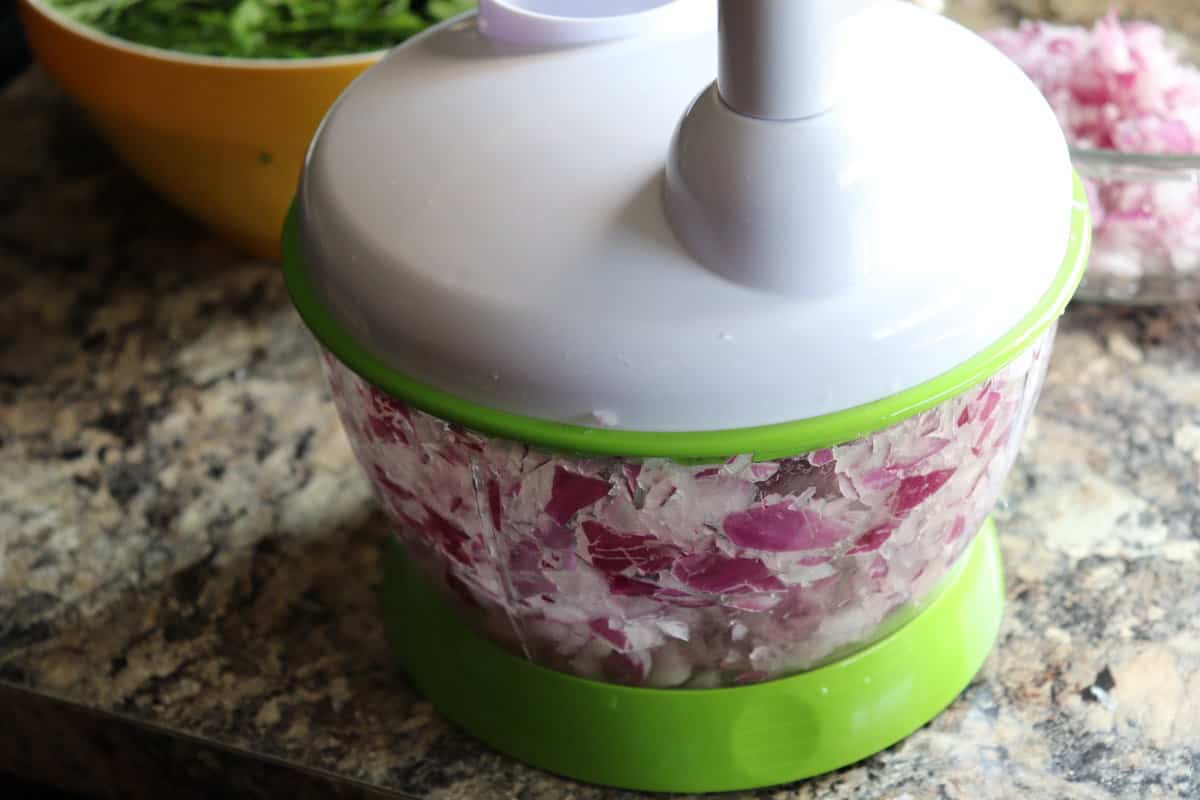
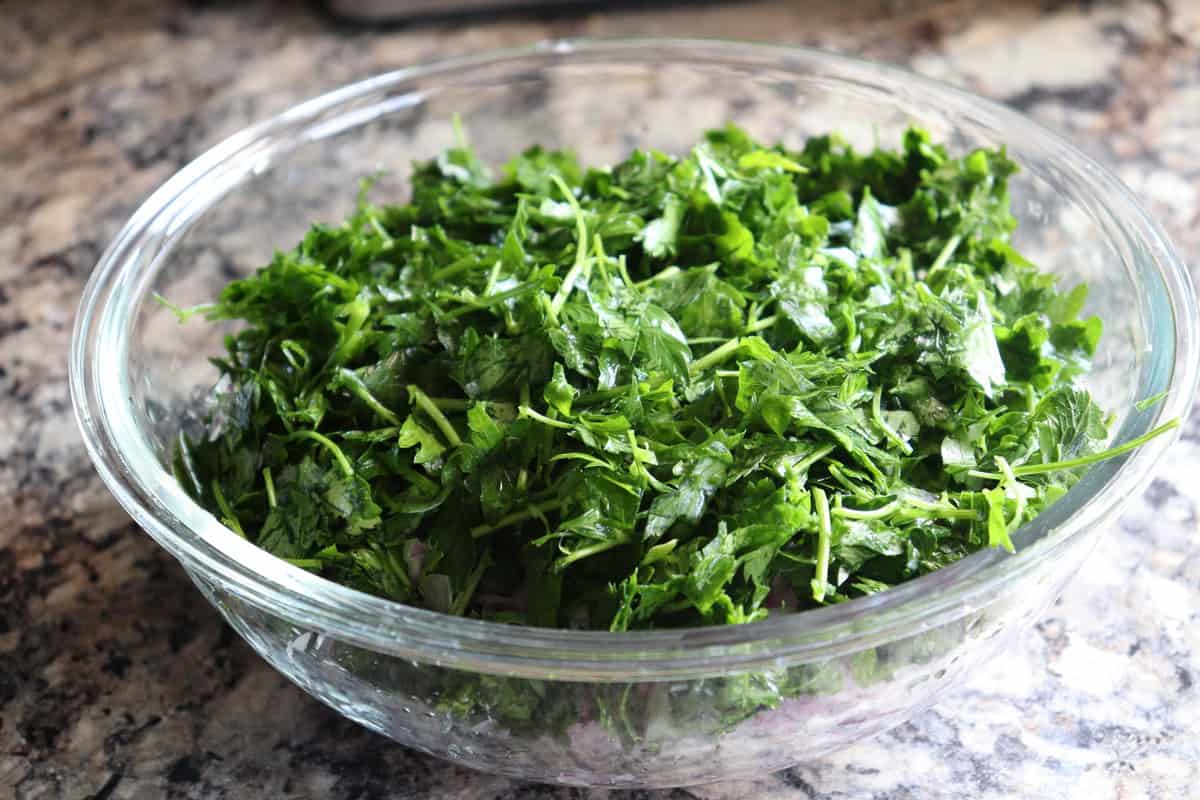
- Take three or four clean paper towels, place them on top of the onion/parsley mixture, and begin to wring out any excess moisture. After wringing the mixture out the best you can, dump the parsley/onion mixture into the bowl with the ground beef.
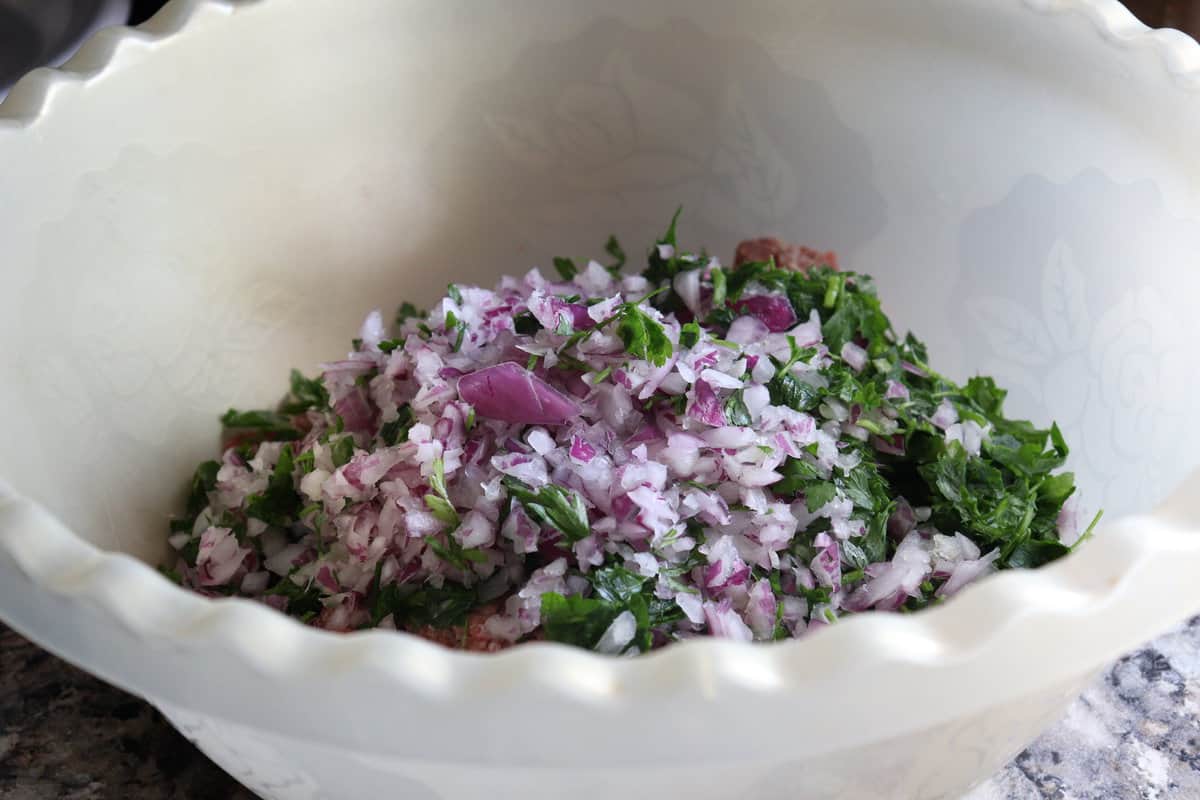
- Add in the seven spices, salt, and freshly ground black pepper.
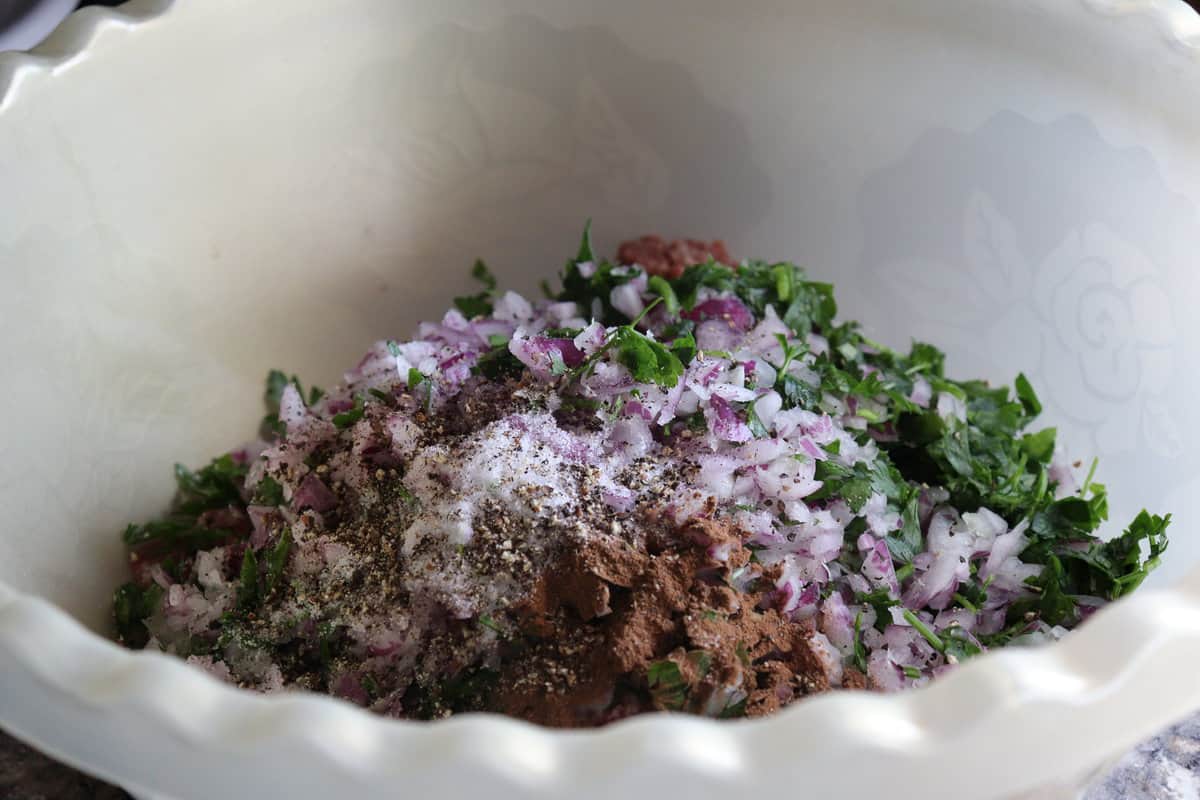
- Begin to gently mix until everything is well combined and uniform. Taste a small piece to taste for seasoning. Adjust the seasoning to your liking, if necessary.
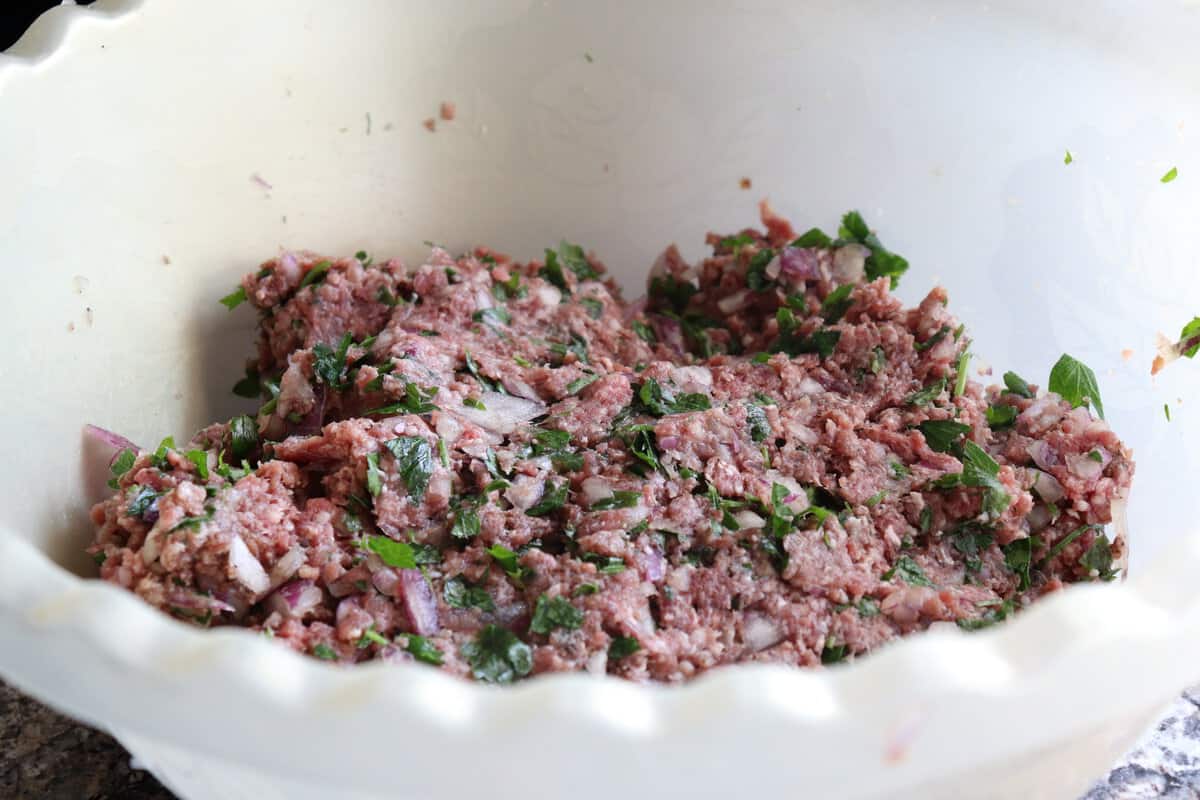
- Begin to roll about two heaping tablespoons or a mini cookie scoop's amount worth of kafta in between the palms of your hands until you form a log. Push the ends in gently and continue rolling until you get an oblong, football-shaped kafta. If you find it too difficult to roll them into this shape, you can just shape them into balls.
- Note: You'll get much more than what I have pictured, however, that day we were making kafta in a pita, so I only rolled up a few for an example for this recipe.
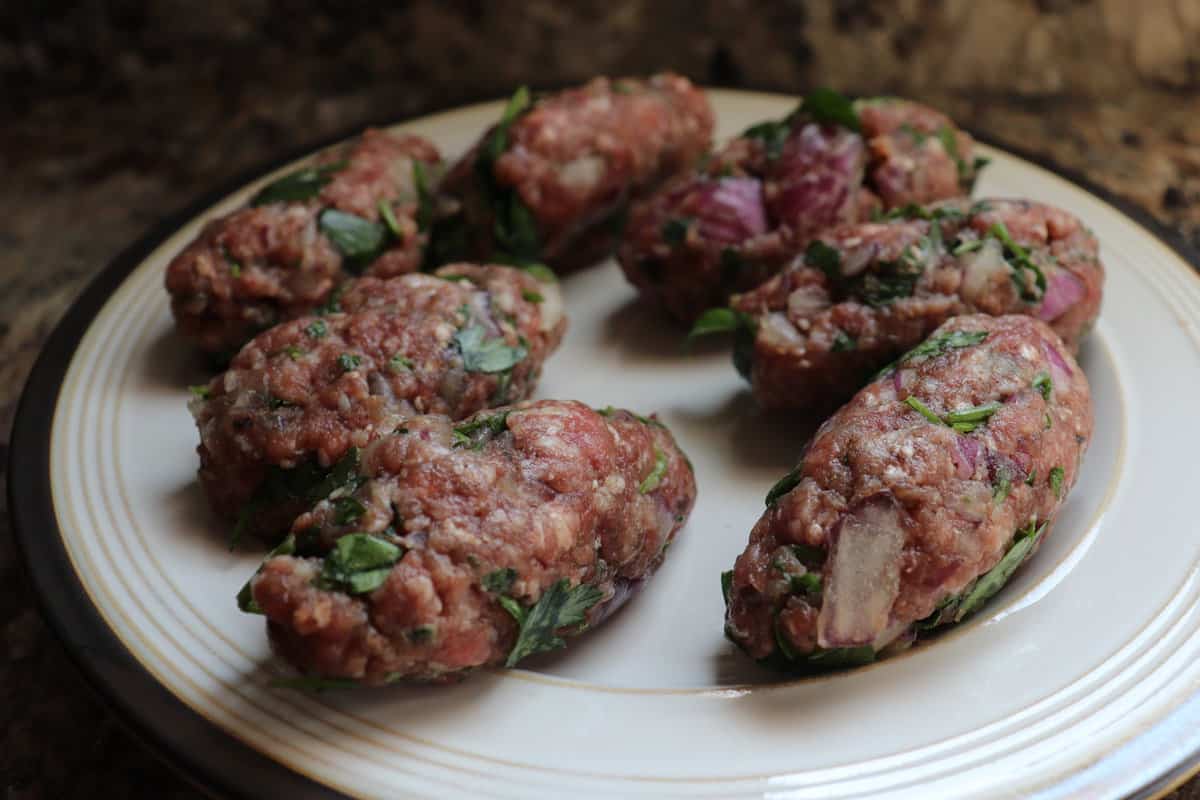
- Turn your range up to medium-high heat. Pour enough olive oil to coat the bottom of your nonstick pan. The amount will depend on the size of your pan, so I can't give you an exact amount. Allow the oil to heat up until you begin to hear some sizzling and popping. Add your kafta in there in batches, making sure to re-oil as needed. I cook about seven at a time, but this depends on how big the pan you're using is. Use a spoon to turn the kafta as they sear on the side that's lying flat on the surface. Continue to do this so they don't overcook and they don't stick to the pan. I know we're using a nonstick pan, but this is still how it should be done. Once they're seared off and cooked through, about five minutes or so, turn the heat off and add in the lemon juice slowly. Shake your pan gently by the handle to evenly distribute the juice. An olive oil/lemon pan sauce should now form. Allow the kafta to continue off the heat for another minute in the sauce.
Note: I know my kafta seems lighter in color than what you may normally see in restaurants, but that's because I like my beef medium rare. Not generalizing, but many Lebanese do like their meat well done. Cook until the doneness you like is reached, however, I highly suggest medium rare. The kafta will be extremely tender and juicy.
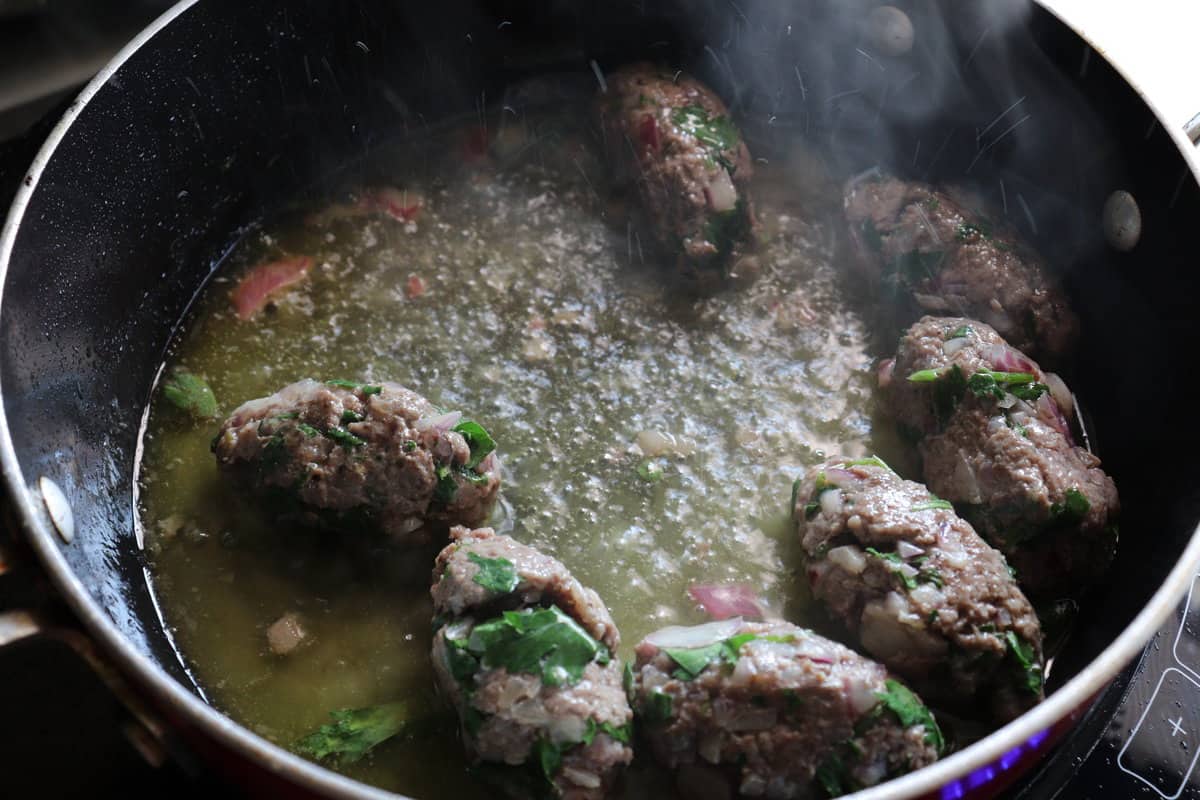
- Pour your lemon/olive oil pan juice into the serving bowl or onto the serving plate (optional, but recommended) and gently place your kafta on the same plate or bowl. Continue to cook the kafta in batches until they're all cooked or you can reserve the uncooked kafta mixture covered in the fridge for another time.
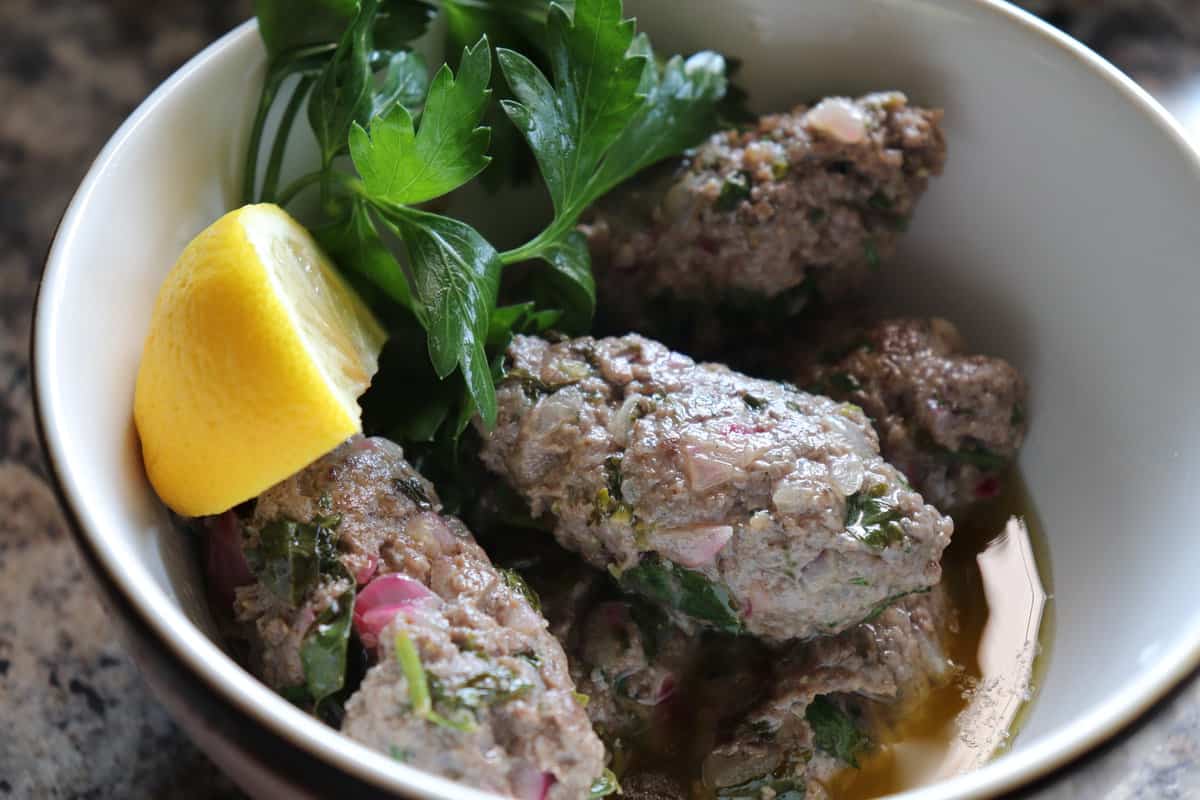
- Squeeze fresh lemon juice over the top of the kafta. Serve as you please! You can eat kafta with a fork, your hands, or pita bread. You can serve this with accompanying rice, hummus, ketchup, or pan juice. Enjoy!

SOME MORE GREAT KAFTA RECIPES:
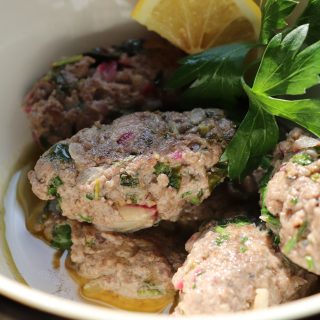
Lebanese Sauteed Kafta
Ingredients
- 3 lbs ground chuck or ground lamb
- 2 large red onions chopped finely
- 3 bunches Italian flat leaf parsley minced or chopped finely
- 2 ½ teaspoons salt or to taste
- 2 ½ teaspoon freshly ground black pepper or to taste
- 2 ¼ teaspoon seven spice
- ⅛ cup olive oil re-oil the pan as necessary
- ¼ cup lemon juice re-juice as necessary
Instructions
- Begin by peeling and cutting the red onions into quarters. Once cut, remove the inner bulbs and discard them.
- Next, wash the parsley very well and allow the parsley to sit in a strainer to drain any excess moisture.
- Using a food processor or knife to dice the red onions into a fine chop or mince. Place the chopped onions in a separate bowl and set aside. Begin to mince the parsley. Once done, add all the parsley to the bowl of onions.
- Take three or four clean paper towels, place them on top of the onion/parsley mixture, and begin to wring out any excess moisture. After wringing the mixture out the best you can, dump the parsley/onion mixture into the bowl with the ground beef.
- Add in the seven spice, salt, and freshly ground black pepper.
- Begin to gently mix until everything is well combined and uniform. Taste a small piece to taste for seasoning. Adjust the seasoning to your liking, if necessary.
- Begin to roll about two heaping tablespoons or a mini cookie scoop's amount worth of kafta in between the palm of your hands until you form a log. Push the ends in gently and continue rolling until you get an oblong, football-shaped kafta. If you find it too difficult to roll them into this shape, you can just shape them into balls.
- Turn your range up to medium-high heat. Pour enough olive oil to coat the bottom of your nonstick pan. The amount will depend on the size of your pan, so I can't give you an exact amount. Allow the oil to heat up until you begin to hear some sizzling and popping. Add your kafta in there in batches, making sure to re-oil as needed. I cook about seven at a time, but this totally depends on how big the pan you're using is. Use a spoon to turn the kafta as they sear on the side that's laying flat on the surface. Continue to do this so they don't overcook and they don't stick to the pan. I know we're using a nonstick pan, but this is still how it should be done. Once they're seared off and cooked through, about five minutes or so, turn the heat off and add in the lemon juice slowly. Shake your pan gently by the handle to evenly distribute the juice. An olive oil/lemon pan sauce should now form. Allow the kafta to continue off the heat for another minute in the sauce.
- Pour your lemon/olive oil pan juice into the serving bowl or onto the serving plate (optional, but recommended) and gently place your kafta on the same plate or bowl. Continue to cook the kafta in batches until they're all cooked or you can reserve the meat mixture covered in the fridge for another time.
- Squeeze fresh lemon juice over the top of the kafta. Serve as you please! You can eat kafta with a fork, your hands, or pita bread. You can serve this with accompanying rice, hummus, ketchup or the pan juice. Enjoy!

